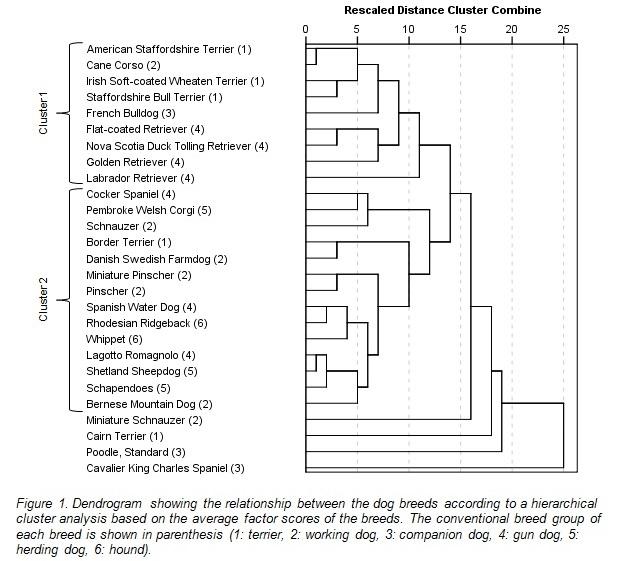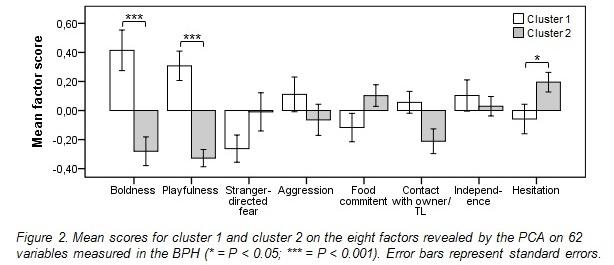Results
Eight factors were extracted from the PCA performed on 62 variables measured in the BPH. According to the most salient variables these factors were labelled 'boldness', 'playfulness', 'stranger-directed fear', 'aggression', 'food commitment', 'contact with owner/ test leader', 'independence' and 'hesitation'.
Significant differences between the breeds were found for the scores on all eight factors (N = 856, df = 26; boldness H = 178.024, P < 0.001; activity H = 152.671, P < 0.001; stranger-directed fear H = 160.729, P < 0.001; aggression H= 96.302, P < 0.001; food commitment H = 104.009, P < 0.001; contact with owner/ test leader H = 53.978, P < 0.001; independence H = 63.857, P < 0.001; hesitation H = 84.644, P < 0.001).
Clustering of the breeds according to their behaviour
The breeds were clustered on the basis of their average scores on the eight factors extracted from the PCA using hierarchical cluster analysis. Their relationship is illustrated by the dendrogram (Figure 1). Beside four breeds which split off from the others due to extreme scores on several factors, two main clusters of breeds were found.

For the comparison of the two main clusters, the average breed scores on each factor were used. Significant differences between cluster 1 and cluster 2 were found for the scores on the factors 'boldness', 'activity' and 'hesitation' (Figure 2). Moreover, the scores on the factors 'food commitment' (P = 0.053) and 'contact with owner/ test leader' (P = 0.063) tended to differ between the groups. Thus, the separation of the two clusters is mainly based on boldness, activity, hesitation and the dogs’ performance in the subtest ‘interest in food’.

Responsible for this page:
Director of undergraduate studies Biology
Last updated:
05/14/14
